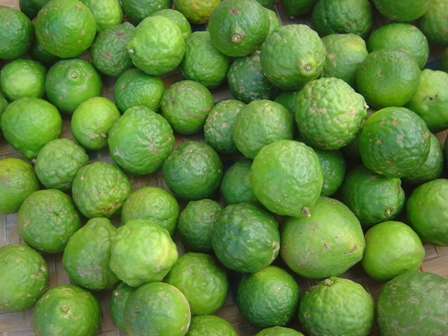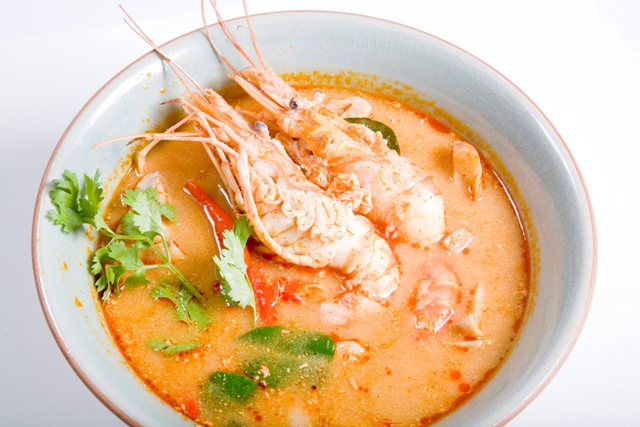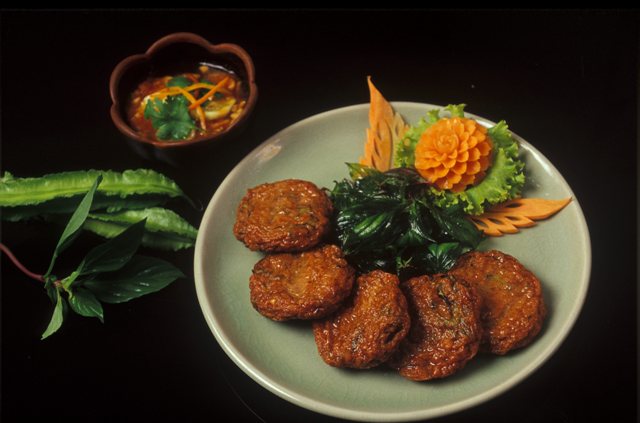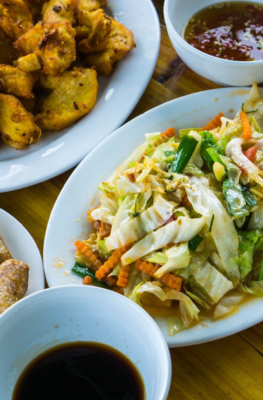Published on May 5, 2014

Lending an essential fragrance and flavour to Southeast Asian cuisine, Citrus hystrix, commonly known as kaffir lime or makrut, is a thorny bushy tree native to the region.
Makrut leaves, which grow in figure-eight-shaped pairs, are very hard to substitute from many Southeast Asian dishes. They are used whole like curry leaves or bay leaves to impart their unique properties to soups, sauces, salads and stir-fries but are not themselves ingested. And like curry leaves and bay leaves, makrut leaves can be used fresh or dried and can be stored frozen.
Many Iconic Thai and Lao dishes make use of Makrut. Its leaves are a signature flavour of many Thai curries, salads, soups and stir-fries. Among the favourites are Tom Yum and Tod Mun, Thai spicy fish cakes made of red curry paste and fish.


Cambodia’s staple base paste krueng require makrut leaves. The emerald-green, double leaf lobes are also used in Indonesian cuisine for favourites such as soto ayam, and accompany Indonesian bay leaves in certain chicken and fish dishes. Makrut leaves are also found in Malaysian and Myanmar cuisines where they perform a similar function. In Vietnam makrut leaves are used with chicken to add favourable fragrances and with snails to reduce repugnant ones.
Makrut leaves are highly aromatic and add their own elegant flavour. They should be used whole when simmering in soups and curries; bruised or torn to release flavour faster in stir-fries. Tough and fibrous, the leaf itself is not eaten except when it is shredded very finely, such as in tod munpla (Thai fish cake). Tender young leaves are the preferred choice for salads but not if they are dried. The bitter midribs and stalks in older leaves may be removed before use. Makrut leaves also add great flavour to rice, marinades, stocks, and syrups.
The juice of the green makrut lime is generally regarded as too acidic for food. While the rind is used in Lao and Thai curry paste, adding an aromatic, astringent flavour, only Cambodians have found an edible use for the small 4cm-wide fruit; crystallizing them whole as tart candies.
The bumpy green fruit do have other uses. The juice and rinds are used in traditional Indonesian medicine; for this reason Indonesians call it jeruk obat (“medicine citrus”). The oil from the rind also has strong insecticidal properties. The juice finds use as a traditional cleanser for clothing and hair in Thailand. And lustral water infused with slices of makrut lime is used in Cambodian religious ceremonies. The versatile leaves also have non-food applications, such as in zesty hot baths and citrusy potpourri, and as a natural hand freshener.
Keep your senses on high alert on your next Southeast Asian adventure to see how many times you come across makrut.
[The Oxford Companion to Food recommends avoiding the word “kaffir” in favour of the Thai-derived “makrut”. Kaffir is an offensive term in some cultures.]
Sources: http://en.wikipedia.org/wiki/Kaffir_lime (including pics); http://www.wikihow.com/Use-Kaffir-Lime-Leaves; http://www.taste.com.au/how+to/articles/1220/kaffir+lime+leaves






